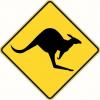Spent some time in the shop working on saws among all the house duties one must do.
Couple of large tenon saws. 16" and 20" 11 and 9 ppi respectively. Then a Sculpted tenon fashioned after the Regan but with a lambs tongue. 12 ppi still to be finish filed. 15, 16, 17, and 18ppi.
20200530_184116.jpg
20200530_181154.jpg
Some dovetails not filed yet.
20200530_234004.jpg32*, 38* and 45* hang angles.





 Reply With Quote
Reply With Quote






 I just filed a 0.015" at 16ppi today. ( A saw for making saws ) 2.25" is a little tall for that thin of a plate. Requires a lighter touch or the plate can easily deflect. 16, 17, and 18ppi are nice for the thinner woods 3/8ths etc.. A beginning user would benefit from the rigidity of the 0.020" plate vs the thinner 0.015". Easier to control/ guide.
I just filed a 0.015" at 16ppi today. ( A saw for making saws ) 2.25" is a little tall for that thin of a plate. Requires a lighter touch or the plate can easily deflect. 16, 17, and 18ppi are nice for the thinner woods 3/8ths etc.. A beginning user would benefit from the rigidity of the 0.020" plate vs the thinner 0.015". Easier to control/ guide. 